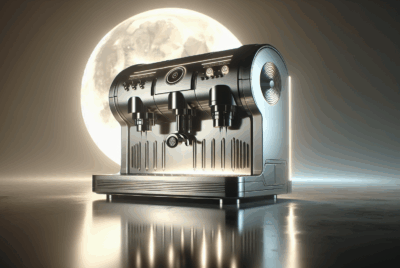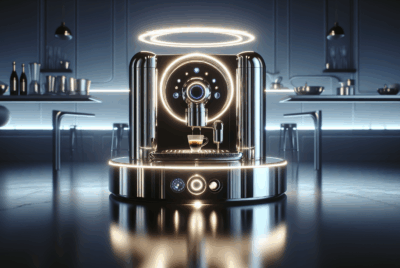How to Make Espresso at Home: It Doesn’t Take Brewing Magic
As an Amazon Associate, I earn from qualifying purchases, at no additional cost to you. Disclaimer
Introduction
Hello coffee lovers! As a fellow enthusiast, I totally understand the urge for that perfect cup of espresso at home. The tantalizing aroma, the rich flavor, the comforting warmth…it’s a complete experience. Wondering how to make espresso at home so you can create this coffee shop magic in your own kitchen? Let me take you through an exciting home barista journey.
The Importance of the Right Equipment
Before we get into the nitty-gritty of the brewing process, let’s talk about the true unsung heroes of espresso making – the equipment. The quality of your espresso is highly dependent on the kind of hardware you use, and if you’re a beginner with dreams of creating that perfect cup at home, it’s crucial that you understand this.
Think of espresso-making as an art, and the equipment as your paintbrush. You wouldn’t expect Picasso to create a masterpiece with a worn-out brush, would you? Similarly, your journey towards the perfect espresso begins with choosing the right tools.
Choosing an Espresso Machine
The espresso machine is your primary tool and can make or break your espresso-making experience. Machines can range from simple models for beginners to complex ones with all the bells and whistles you can think of. Remember the first time I decided to buy an espresso machine? I was overwhelmed by the options available. But over time, I learned that the best machine for you depends largely on your skill level and commitment to the craft.
For beginners, a simple yet reliable machine would work wonders. You don’t want to dive head-first into the deep end with a machine that has too many features which might end up confusing you. But one feature to definitely look for is good pressure. You need a machine that can deliver a pressure of 9 to 15 bars – this is key to achieving the ‘crema’, the creamy top layer of the espresso that adds so much to its flavor and aroma.
Selecting a Coffee Grinder
Next up is the coffee grinder. An underappreciated but equally vital part of your espresso setup. I cannot emphasize enough the importance of a good grinder. Espresso requires very finely ground beans, and achieving this consistency is crucial to the taste and quality of your espresso.
A burr grinder is what you should be looking at. These grinders crush beans between two burred plates, providing a consistent grind size. Blade grinders, on the other hand, chop beans unevenly and can result in a mix of fine and coarse particles, which isn’t ideal for espresso.
My first grinder was a basic blade grinder. I quickly realized my mistake when my espresso turned out uneven and bitter. The day I switched to a burr grinder was a game changer. The difference in the flavor and consistency of my espresso was significant.
Choosing the Perfect Coffee Beans
In the realm of espresso, equipment might be the knights, but the coffee beans? They are the reigning sovereigns. If you’ve ever walked into a coffee shop, inhaled deeply, and sighed with delight, then you’ve experienced firsthand the sheer magic of coffee beans. Now, imagine having that same experience right in your home.
Let me tell you, as a coffee enthusiast who has been down this road before, picking the right beans is an adventure of its own. It’s not merely a choice; it’s a journey where you get to explore, experiment, and discover the flavors you love.
Understanding Coffee Roasts
First things first, let’s talk about coffee roasts. You’ll generally find beans categorized into light, medium, and dark roasts. Traditionally, espresso is made with dark roasted beans. They’re roasted for a longer duration, which imparts a robust flavor, often with chocolate or caramel undertones.
However, there’s no rule set in stone. The beauty of brewing espresso at home is that you can customize it to your liking. Feel free to explore the lighter side. Medium roasts tend to offer a balance between acidity and dark notes, often revealing fruity, floral, or spicy notes.
I remember, when I first started making espresso at home, I was a die-hard dark roast fan. But then, one day, I decided to give a medium roast a try. And guess what? I was pleasantly surprised. The fruity flavors added a fresh twist to my espresso, and I’ve been hooked since then.
Where to Buy Coffee Beans
Now that you have an idea about what roast to go for, you might be wondering where to buy coffee beans. Thankfully, there are plenty of options available. From your local grocery stores and specialty coffee shops to online vendors, you can get your beans from almost anywhere. But here’s a tip – always check the roast date. Freshly roasted beans are the best, ideally within a month of the roast date.
There’s something special about going to a local coffee shop or roaster and buying beans. I love talking to the baristas and roasters, learning about the different beans they have, where they come from, and the flavors I can expect. It’s an immersive experience that often gives me new insights and knowledge.
One memorable encounter was when I discovered a local roaster selling beans from a small farm in Ethiopia. The beans were a medium roast and had a unique berry-like flavor. It made one of the most refreshing espressos I’d ever tasted.
Step by Step Guide: Making Espresso at Home
Now that we’ve set the stage with the right equipment and beans, let’s get to the heart of the matter – the brewing process. Making espresso at home is a bit like cooking your favorite dish for the first time. It might seem daunting, and there might be a few hiccups along the way, but the satisfaction of savoring the fruits of your labor? Absolutely unparalleled.
Preparing Your Machine and Beans
Before you even touch your beans, make sure your espresso machine is clean and heated. A cold machine could affect the temperature of your brew, leading to an inconsistent flavor. I remember my first few brewing experiences where I was too excited to wait for the machine to heat up properly. The result? Lukewarm, uninspiring espresso. Lesson learned.
While your machine is heating up, measure your coffee beans. You’ll need about 18-20 grams of coffee for a double shot of espresso. The first time I made espresso at home, I eyeballed it and ended up with a weak, watery brew. Now, I use a digital scale to measure my beans for perfect consistency each time.
Grinding Your Beans
Next comes grinding. You’re aiming for a consistency similar to fine table salt. This might require a bit of trial and error to get right. Don’t worry if you don’t nail it the first time. When I first started, I was grinding my beans too coarsely, which led to a weak, under-extracted espresso. Over time, with some experimenting, I found the perfect grind setting on my grinder that works for me.
Perfecting Your Tamp
Tamping is the act of pressing the coffee grounds into a “puck” in the portafilter. The goal here is to ensure that the water from the machine passes through the coffee evenly, extracting the most flavor. Your tamp should be firm and consistent across the surface. In the early days, I recall struggling with the tamp pressure, but with practice, I found my sweet spot. A good rule of thumb is to press down with the same pressure you’d use to open a door.
Mastering the Brew
Now comes the moment of truth. Insert the portafilter into the machine, hit the brew button, and watch as the deep brown liquid gold starts pouring into your cup. The brew time should ideally be around 20-30 seconds for a double shot.
The beauty of this process is that each step is an opportunity to refine and perfect your brew. Every batch of beans may require slight adjustments. Every new machine might behave a little differently. But that’s the joy of it. You learn, you grow, and with each brew, you come closer to mastering the art of espresso.
How to Make Espresso at Home: Expert Tips
You’re well on your way to becoming an at-home espresso guru now. Armed with your equipment, beans, and a step-by-step guide, you’re ready to create some coffee magic. But just before you start, here are a few expert tips I’ve picked up over the years that can elevate your espresso from good to extraordinary.
Temperature and Pressure Management
First and foremost, let’s talk about temperature and pressure management. These are two pillars on which the perfect espresso stands. Your machine should maintain a steady temperature, typically between 195 to 205 degrees Fahrenheit. Too hot, and your espresso could taste burnt; too cold, and it might taste under-extracted or weak.
Similarly, pressure plays a pivotal role in the extraction process. Most espresso machines are designed to operate at around 9 to 15 bars of pressure. This high-pressure environment is what forces the water through the coffee grounds, extracting the rich, full-bodied flavor that we associate with a great espresso.
One incident that stands out was when I experimented with the temperature on my machine. I raised it a bit, thinking it would make my espresso stronger. Boy, was I wrong! The espresso tasted over-extracted and bitter. It was a lesson learned – striking the right balance with temperature and pressure is crucial.
Cleaning and Maintenance
Next up is cleaning and maintenance. I cannot emphasize this enough – keep your espresso machine clean! Not just for hygiene, but also because it can affect the taste of your espresso. Over time, coffee residue can build up in the machine, altering the taste of your brew.
One time, after weeks of daily espresso brewing, I noticed my espresso started tasting odd. After some troubleshooting, I realized I hadn’t been cleaning my machine as regularly as I should have. After a thorough cleaning session, the strange taste was gone, and my espresso was back to its former glory.
I also recommend regular maintenance of your machine. This might involve descaling to remove mineral build-up or replacing certain parts that wear out over time. A well-maintained machine not only functions better but also lasts longer.
How to Make Espresso at Home Takes Practice and Patience
Lastly, remember that, like any other skill, making the perfect espresso requires practice and patience. You might not nail it on your first try, or your second, or even your tenth. But with each brew, you’ll learn something new, make adjustments, and get better.
When I began my espresso journey, I was far from making the perfect brew. My early espressos were often too weak, too bitter, or not hot enough. But I persisted, tweaked my method, and learned from my mistakes. Today, I can whip up a delicious espresso that rivals any coffee shop brew.
Conclusion
As we conclude our espresso-making journey, it’s crucial to remember that learning how to make espresso at home isn’t about achieving cafe-level expertise overnight. Rather, it’s about immersing yourself in the process, learning, experimenting, and above all, enjoying every sip of your creation.
Brewing espresso at home is not just about making a cup of coffee; it’s about creating an experience. From selecting the right equipment and beans to getting the grind and tamp just right, each step offers a chance to hone your craft and brings you one step closer to that perfect brew.
If there’s one thing I’ve learned over my years of espresso-making, it’s that perfection isn’t born out of a single attempt but multiple trials, errors, and small victories. There were days when my espresso tasted bitter, and times when it was too watery. But with every imperfect cup, I learned a valuable lesson, made tweaks, and improved.
So embark on your journey with an open mind, a sense of curiosity, and a willingness to experiment. Remember, at the end of the day, the best espresso is one that you enjoyed making and brings a smile to your face with each sip.
Happy brewing!
Frequently Asked Questions (FAQs)
1. How to make espresso at home without a machine?
Yes, there are ways to make espresso-like coffee without a machine. However, for authentic espresso, a machine is recommended.
2. What’s the best type of coffee bean for espresso?
Traditionally, espresso is made from dark roasted beans, but you can experiment with different types to find what suits your taste.
3. How long does it take to brew espresso?
The actual brewing, where the water passes through the puck, should take about 20-30 seconds.
4. How much coffee do I need for one shot of espresso?
Usually, a single shot of espresso uses about 7-9 grams of coffee.
5. What grind size should I use for espresso?
Espresso requires a fine grind size, resembling table salt. But this can vary depending on your equipment and beans.





